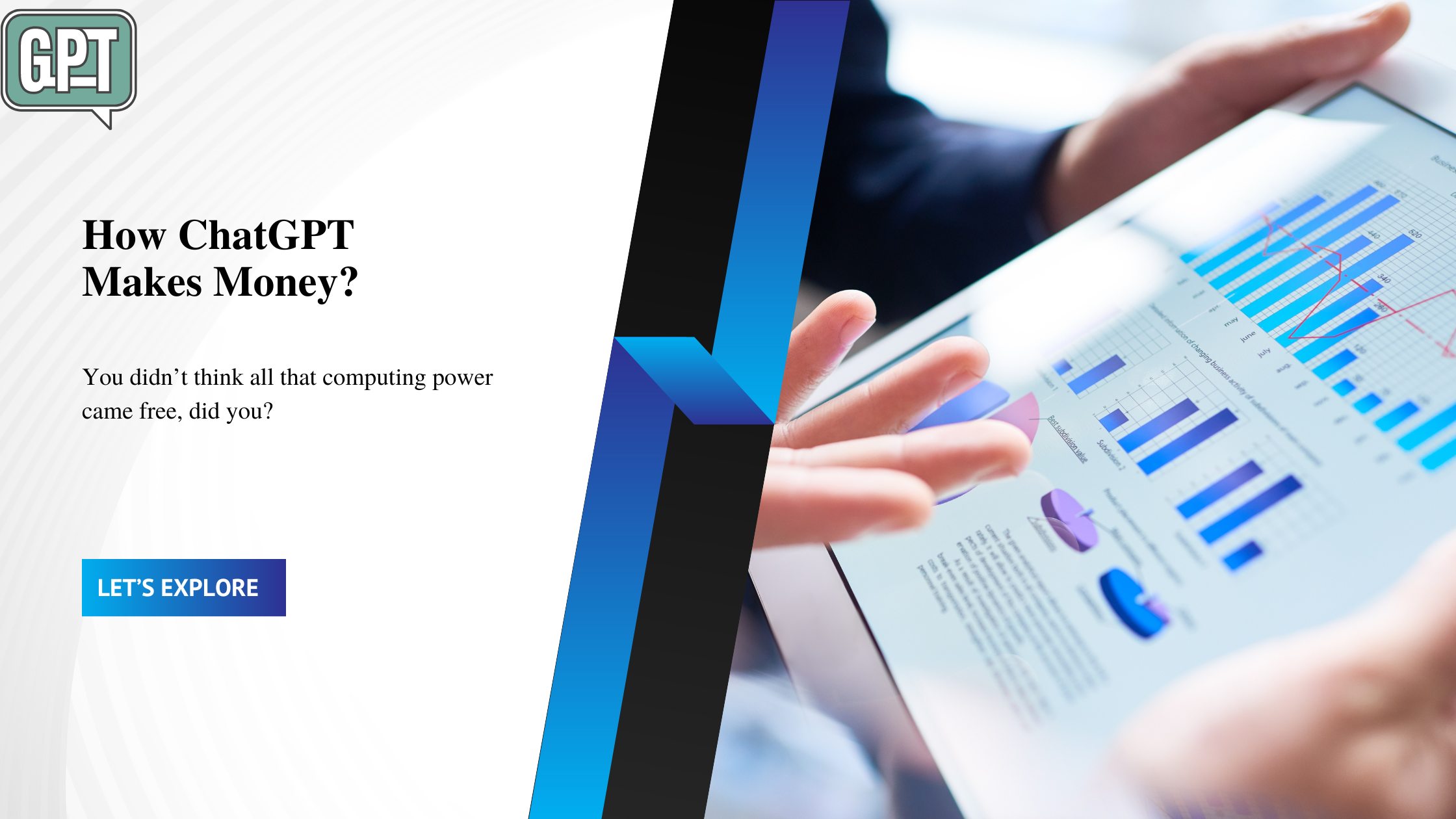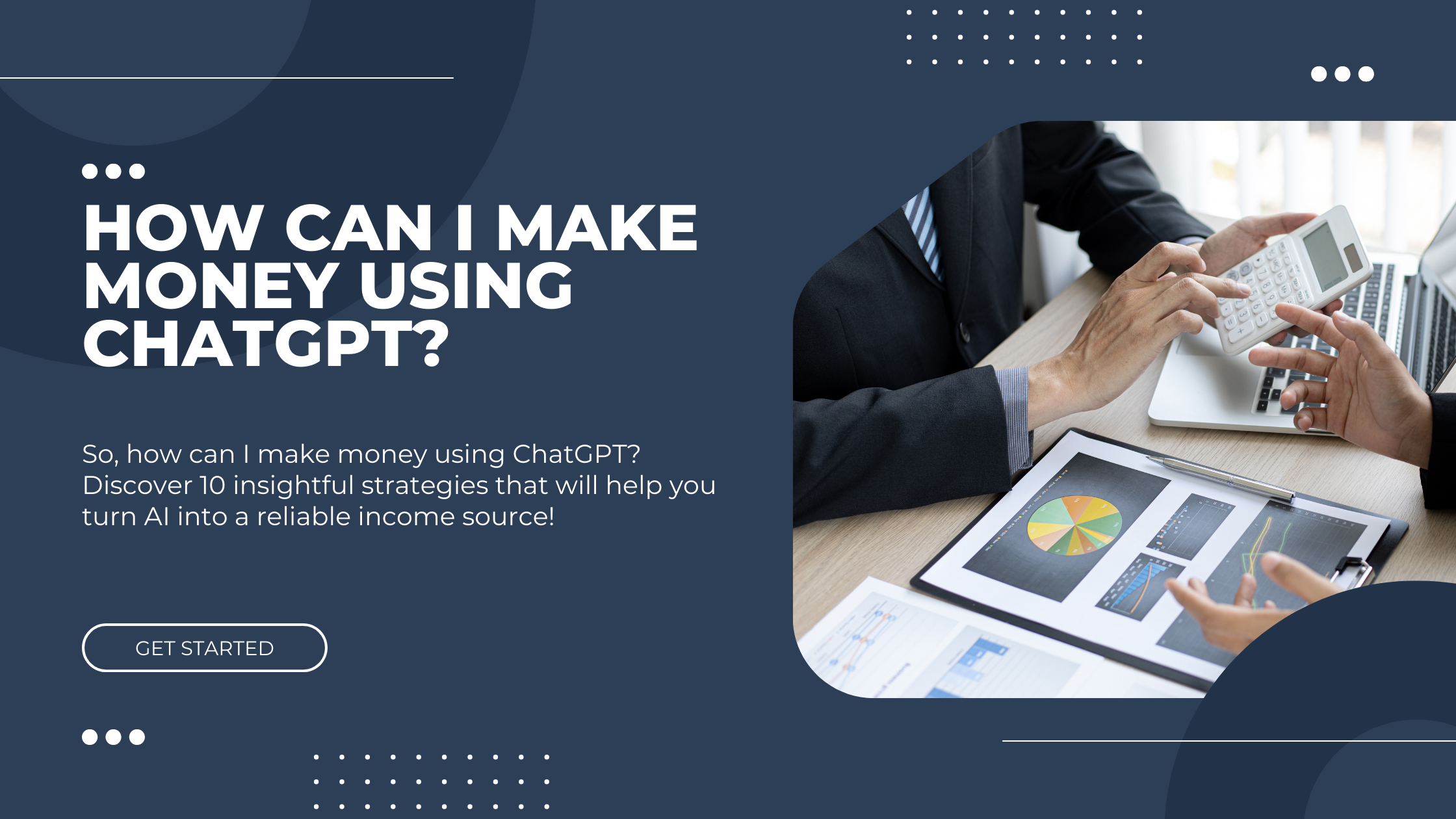Spoiler: There’s no magic. Just a really smart system built on layers of value.
We live in a fascinating world where machines can think. Well, sort of.
AI-driven tools like ChatGPT are not just enhancing our conversations—they’re reshaping businesses, education, customer service, and a whole lot more.
But here’s the question you and I are curious about (I know you’re thinking it): How ChatGPT makes money?
You didn’t think all that computing power came free, did you?
Let’s peel back the layers and examine the revenue-generating machine behind ChatGPT, one step at a time.
Subscription Services: The Premium Delight
Here’s the deal. People are willing to pay for better things. You know this. I know this. OpenAI knows this. That’s why they offer ChatGPT Plus, a premium service for those who want to unlock the full potential of the AI.
For $20 per month, users get:
- Access to GPT-4: GPT-4 is simply faster, smarter, and more accurate than GPT-3.5 (which is what you get for free). Speed matters. Precision matters. Premium users know this and pay for it.
- Priority access: You’re in the middle of an important project, and bam! The free version is sluggish. Not for Plus users. They get smooth, consistent access, even during peak times. This is the customer service equivalent of always flying first class.
API Usage: The Developer’s Playground
We’re in the era of APIs ruling the world. If you’ve ever developed anything, you know how essential APIs are to modern software development. OpenAI offers its GPT models via an API that businesses can tap into to supercharge their apps, customer service systems, or even content generators.
It’s a brilliant model and this is how ChatGPT makes money:
- Usage-based pricing: Businesses pay for the number of tokens (words) processed. It scales based on how much value the business extracts from the API. No fixed fee, no bulk purchasing, no headaches.
- Custom integrations: For some organizations, the ChatGPT API is a plug-and-play solution. Others? They need something more tailored. Either way, OpenAI charges for the flexibility and the enormous computational power behind the scenes.
Partnerships and Licensing: The Microsoft Factor
Speaking of partnerships, here’s where OpenAI’s brilliance shines through. They’ve formed a powerhouse partnership with Microsoft—a deal that not only brings billions of dollars to OpenAI but also deeply integrates ChatGPT technology into Microsoft’s core products
Let’s look at the highlights:
- Azure Cloud Services: GPT models are integrated into Microsoft’s Azure AI offerings, meaning companies can run their own versions of GPT on Microsoft’s infrastructure.
- Microsoft 365 Copilot: ChatGPT technology powers smart features in Word, Excel, and Outlook. Imagine AI writing emails, drafting documents, or building Excel formulas for you. That’s not a dream, it’s today’s reality.
Microsoft wins by adding next-gen AI into its enterprise tools. OpenAI wins by leveraging a massive distribution network. You win by having a more productive workday (hopefully).
Custom Enterprise Solutions: Tailoring for Giants
Not every business wants the one-size-fits-all API or a subscription to GPT-4. Some of them need something more unique. Enter custom enterprise solutions.
Let’s be honest. The big players don’t mind paying more to get exactly what they want. So OpenAI offers:
- Custom models: Imagine a version of ChatGPT that knows everything about your specific industry. Tailored to answer questions in your company’s jargon. OpenAI can fine-tune models for businesses that have the budget to pay for it.
- Data training: Some businesses want ChatGPT to process and learn from their proprietary data. It’s a tricky ask, but with the right price, OpenAI can make it happen..
Other Revenue Streams: Small but Smart
There are other interesting revenue streams we shouldn’t ignore, even if they’re smaller:
- Education and training: AI models are finding homes in e-learning platforms, helping learners improve their skills and knowledge. These companies pay OpenAI for the underlying tech.
- Research grants and investments: OpenAI also has a history of funding from major tech giants like Microsoft. Though not directly tied to ChatGPT’s revenue, it supports the broader mission to continue growing and innovating.
How to Make Money with ChatGPT
- Content Creation: Use ChatGPT to write blog posts, social media content, product descriptions, etc. Speed up your output, take on more projects, and increase income.
- Freelancing: Offer writing, SEO, or copywriting services to clients by leveraging ChatGPT for faster, high-quality content creation.
- Automate Customer Support: Set up ChatGPT-powered chatbots to handle FAQs, inquiries, and bookings, saving time and resources.
- Develop Chatbots/Apps: Create custom AI-powered chatbots or apps for businesses using the OpenAI API and charge for these services.
- Affiliate Marketing: Use ChatGPT to create SEO-optimized content with affiliate links to earn commissions.
- Self-Publishing: Write and sell ebooks, tutorials, or online courses using ChatGPT as a co-author to streamline the process.
- Consulting Services: Offer businesses guidance on integrating AI solutions like ChatGPT for content automation or customer service.
The Bottom Line
So, how ChatGPT makes money?
Through a multi-pronged strategy that maximizes value across the entire spectrum—from casual users willing to pay a bit more for premium services, to developers and companies integrating AI into their products, to partnerships with giants like Microsoft.
It’s a symbiotic system, where value drives revenue (and not the other way around).
If there’s one lesson to take from this, it’s simple: Create value, solve problems, and people will always pay.
There’s no magic here. Just smart business.


